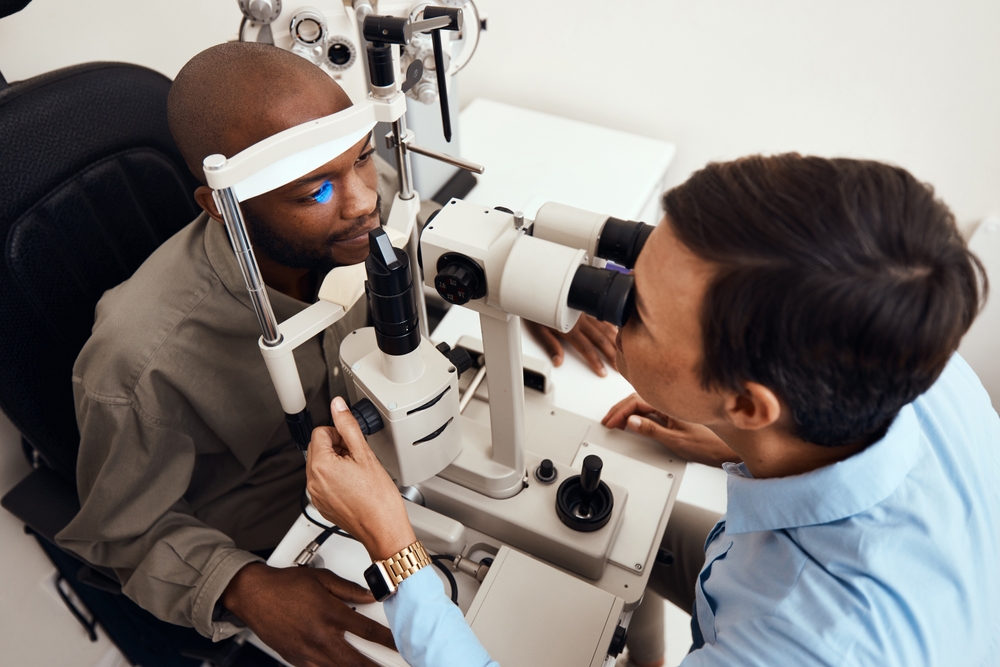7 of the Best Eye Care Tips to Follow this Fall
From trees changing into colors of yellow, red, and orange to pumpkin spice everything and the delightful crisp air, there’s so much to love about fall. By taking good care of your eyes, you’ll enjoy fall’s beauty and live your life more fully.
Keep reading to learn more about the top 7 eye care tips to follow this fall.
1. Keep Wearing Your Sunglasses

Although it may seem like the time for sunglasses is only in the summer, that’s not entirely accurate. After all, the sun shines all the time, so why wouldn’t you need sunglasses whenever you’re outdoors, especially in the fall?
Overcast skies can make you believe that they’re safe for your eyes. But even when it’s cloudy outside, UV rays can penetrate clouds during overcast weather and reach your eyes.
Sun exposure is known to increase the risk of developing growths in the eye, corneal damage, cataracts, and macular degeneration. Even though it may seem like there’s less sun during cooler fall months, continue wearing your sunglasses whenever you go outside.
Invest in sunglasses that offer 100 percent UVA and UVB protection to shield your eyes from harmful rays.
2. Eat Foods with Enough Omega-3 Fatty Acids
Eating right contributes to healthy eyes and vision. You can consume many delicious omega-3-rich foods that are also great for your eyes.
These include mackerel, salmon, sardines, Brussels sprouts, and soybeans. Omega-3 fatty acids reduce your risk of elevated eye pressure, which can cause glaucoma.
Omega-3 fatty acids can also reduce your chances of developing dry eye syndrome. Dry eye syndrome is a common condition where your eyes don’t make enough tears or produce poor-quality tears.
3. Stay Hydrated

Staying hydrated is essential for your body. It’s equally crucial for your eyes.
But as the weather gets cooler, it’s easy to forget to drink enough water throughout the day. Water helps your eyes feel and function as they should.
Dehydration can lead to dry eyes, causing blurry or double vision, sensitivity to light, a scratchy or burning sensation, and eye fatigue. You can keep dehydration and dry eyes at bay by drinking eight glasses of water daily.
Drinking water isn’t the only way to keep your body hydrated. Soups, broths, and water-rich foods like strawberries, watermelons, oranges, and cucumbers can also boost your water intake. Hydration prevents irritation and protects your eyes.
4. Limit Your Screen Time
Fall can be the perfect time to binge-watch your favorite shows and movies. But too much screen time can take a toll on your eyes.
If you’re spending too much time looking at digital devices like your phone, laptop, tablet, or working on the computer for work, your eyes may pay the price. The blue light emitted from these devices can
cause digital eye strain.
Digital eye strain symptoms include fatigue, dry eyes, blurred vision, neck and shoulder pain, double vision, and headaches. Reducing screen time is the best way to avoid or eliminate digital eye strain.
You’re also less likely to blink when you’re spending time looking at a screen. Looking at a screen significantly reduces your blink rate, leading to uncomfortable symptoms like dryness, fatigue, and irritation.
Eye strain could be to blame if your eyes have ever felt dry or itchy after spending too long looking at a screen. If you must use digital screens for several hours, follow the 20-20-20 rule.
According to the rule, take a break from your screen after every twenty minutes. Then, look at something at least 20 feet away for 20 seconds.
At the same time, remember to blink deliberately. Intentional blinking helps prevent your eyes from drying out. Together, the 20-20-20 rule and blinking combat digital eye strain by giving your eyes much-needed rest and keeping them moist.
5. Don’t Sit Near Direct Heat Sources

As the cool weather draws in, the warmth from a heater or fireplace can feel incredibly cozy and soothing. But if you sit too close to the heat source or under the vents, hot, dry air can blow directly into your face and make your eyes feel too dry.
Ideally, the best thing you can do is put some distance between yourself and the heat source. Although the air in a heated room might still be dry, you can minimize the effects of dry air on your eyes if you’re not as close.
You can also consider getting a humidifier to add some much-needed moisture into the air as the cool weather turns to winter.
6. See Your Optometrist or Ophthalmologist if You Experience Eye Pain or Vision Loss
Not all types of eye pain are considered emergencies. For instance, mild and occasional eye pain is often no cause for concern.
But if you experience sudden or severe eye pain, eye pain that worsens after a few days, or vision loss with eye pain, you should seek immediate medical attention to protect your vision.
7. Schedule Eye Exams Regularly

Visiting your optometrist or ophthalmologist this fall is one of the best ways to ward off vision concerns and potential eye conditions. Your vision may deteriorate so gradually that you might not notice its decline.
Plus, many problems go unnoticed until they cause serious damage to your eyes. For example, conditions like diabetic retinopathy or glaucoma typically have no symptoms in the initial stages.
An optometrist or ophthalmologist can only diagnose and treat these and other conditions through routine eye examinations. Frequent eye exams allow your optometrist or ophthalmologist to spot any changes in your vision and detect eye conditions early when treatment is most effective.
Maintain Healthy Eyesight this Fall
By following these tips and going for routine eye exams at Eye Consultants of North Dakota, you can ensure your eyes are in their best shape to soak in the magic of fall. Want to maintain sharp vision and healthy eyes this fall and every other season?
Get started by scheduling your eye exam at Eye Consultants of North Dakota in Fargo, ND, today!



